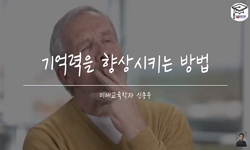이 글에서는 제주4·3시의 내적 특질을 시의 이미지와 비유를 중심으로 살펴보고자 하였다. 특히 이 글에서는 신체와 관련된 이미지와 비유가 제주4·3시의 내적 특질을 형성하는 중요한 요�...
http://chineseinput.net/에서 pinyin(병음)방식으로 중국어를 변환할 수 있습니다.
변환된 중국어를 복사하여 사용하시면 됩니다.
- 中文 을 입력하시려면 zhongwen을 입력하시고 space를누르시면됩니다.
- 北京 을 입력하시려면 beijing을 입력하시고 space를 누르시면 됩니다.
제주4.3시에 나타난 기억의 보존과 발현 방식 - 신체 관련 이미지와 비유를 중심으로 - = A Study on the Preservation and Expression of Memory in Jeju 4.3 Poetry
한글로보기https://www.riss.kr/link?id=A108882652
- 저자
- 발행기관
- 학술지명
- 권호사항
-
발행연도
2023
-
작성언어
-
-
주제어
제주4·3시 ; 기억 ; 신체 ; 이미지와 비유 ; 상처 ; 신체의 기억화 ; 기억의 신체화 ; 증상 ; 빙의 ; Jeju 4 .3 Poetry ; memory ; body ; image and metaphor ; wound ; memorization of body ; somatization of memory ; symptom ; possession
-
KDC
300
-
자료형태
학술저널
-
수록면
73-98(26쪽)
- 제공처
-
0
상세조회 -
0
다운로드
부가정보
국문 초록 (Abstract)
이 글에서는 제주4·3시의 내적 특질을 시의 이미지와 비유를 중심으로 살펴보고자 하였다. 특히 이 글에서는 신체와 관련된 이미지와 비유가 제주4·3시의 내적 특질을 형성하는 중요한 요소일 수 있다는 점을 밝히고자 했다.
제주4ㆍ3시에서 신체와 연관된 이미지와 비유가 빈번하게 활용될 수밖에 없었던 이유는 근본적으로 제주4ㆍ3이라는 역사적 사건의 실체와 전개과정에 원인이 있었다고 해야 할 것이다. 신체의 이미지를 극단적으로 활용하고 있는 김경훈의 시는 제주4ㆍ3의 실체가 무엇보다도 무자비한 폭력 앞에 무방비상태로 노출된 신체의 문제였다는 점을 환기해주고 있었다. 또한 제주4ㆍ3이 역사적 사건이 마무리된 상황에서도 그 기억이 오랫동안 억압되어 왔다는 점은 신체적 상처를 기억의 공간으로 변환시키는 ‘신체의 기억화’ 현상을 야기했다고 할 수 있었다. 그럼으로써 제주4ㆍ3의 상처를 간직한 ‘무명천 할머니’와 같은 인물이 제주4ㆍ3의 기억을 환기하는 시적 대상으로 끊임없이 소환되었다고 할 수 있다. 그리고 신체의 기억화 현상은 더 나아가 제주의 거의 모든 자연물이 신체적 이미지나 비유로 변주되는 현상으로까지 이어지고 있었다.
그리고 다른 한편으로 제주4ㆍ3시에서 신체와 관련된 이미지나 비유는 사건의 직접적인 희생자들을 형상화하는 데만 국한되지 않고 살아남은 사람들의 삶을 형상화하는 과정에서도 빈번하게 등장하고 있었다. 그 이유는 오랫동안 억압된 기억이 신체적 증상으로 드러나는 경우가 많았기 때문이다. 기억의 신체화라 부를 수 있는 이런 현상은 근본적으로 사건 이후 치유되지 못한 집단적 트라우마가 발현된 결과라고 할 수 있는데, 제주4.3시에서는 주로 신체적 증상이나 통증 혹은 질병이나 빙의 등과 같은 형상으로 나타난다고 할 수 있었다. 이런 신체적 증상들은 역사적 사건 이후 제주사람들의 고통스러운 일상적 삶을 보여주는 동시에 그 상처의 깊이가 무의식의 심층에까지 이어져 있다는 점을 보여주고 있기도 하다. 특히 제주4.3시에서 시적 소재로 자주 등장하는 ‘빙의’는 제주사람들이 가지고 있는 집단적 트라우마가 가장 극단적인 신체적 증상으로 나타난 경우라 할 수 있을 뿐 아니라, 제주4.3시의 창작방법으로까지 자리 잡고 있는 상황이었다.
다국어 초록 (Multilingual Abstract)
In this article, I tried to examine the inner characteristics of Jeju 4·3 poetry with the focus on the image and analogy. In particular, this article aims to clarify that the image and analogy related to the body may be an important factor in forming...
In this article, I tried to examine the inner characteristics of Jeju 4·3 poetry with the focus on the image and analogy. In particular, this article aims to clarify that the image and analogy related to the body may be an important factor in forming the internal characteristics of Jeju 4·3 poetry.
The reason why images and analogies related to the body were frequently used in Jeju 4ㆍ3 poetry was fundamentally caused by the reality and development process of the historical event called Jeju 4ㆍ3. Kim Kyung-hoon’s poem, which uses the image of the body extremely, reminded that the reality of Jeju 4ㆍ3 was the problem of the body exposed to the ruthless violence. In addition, the fact that Jeju 4ㆍ3 has been suppressed for a long time even when the historical event has been completed has caused the phenomenon of ‘memorization of body’ that converts physical wounds into the space of memory. In this way, a person like ‘Mummyeongcheon Grandmother’ who kept the wounds of Jeju 4ㆍ3 was constantly summoned as a poetic object to recall the memories of Jeju 4ㆍ3. And the ‘memorization of body’ has led to the phenomenon that almost all natural objects of Jeju are transformed into physical images and metaphors.
On the other hand, images and analogies related to the body in Jeju 4ㆍ3 poetry were not limited to the direct image of the victims of the event, but also frequently appeared in the process of shaping the lives of the survivors. The reason is that long suppressed memories have often been exposed to physical symptoms. This phenomenon, which can be called somatization of memory, is fundamentally the result of the collective trauma that has not been healed since the event. In Jeju 4ㆍ3 poetry, it can be said that it appears mainly in the form of physical symptoms, pain, disease, or possession. These physical symptoms show the painful daily life of Jeju people after the historical event, and at the same time, the depth of the wound leads to the depth of unconsciousness. Especially, ‘possession’, which frequently appears as a poetic material in Jeju 4ㆍ3 poetry, is not only the case where the collective trauma of Jeju people is the most extreme physical symptom, but also the situation that is located as the method of creation of Jeju 4ㆍ3 poetry.
동일학술지(권/호) 다른 논문
-
- 백록어문교육학회
- 윤재연 ( Yoon Jae-yeon )
- 2023
-
- 백록어문교육학회
- 김신자 ( Kim Sin-ja )
- 2023
-
국어교과서 현대시 제재 선정의 문제와 신동엽 시의 활용 방안
- 백록어문교육학회
- 박소용 ( Pak So-yong )
- 2023
-
- 백록어문교육학회
- 김소연 ( Kim So-yeon )
- 2023




 KISS
KISS





